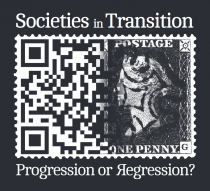- About
- Team
- Projects
- Children and the Environment
- ELiCiT (Exploring lifestyle changes in transition)
- Foundations for Sustainable Living
- HABITs
- Mapping Rebound Effects
- PASSAGE (Prosperity and Sustainability in the Green Economy)
- Policy Dialogue
- Price Responsiveness of Demand in Energy
- Resilience and Sustainable Lifestyles
- Sustainability Transitions in Food Systems
- Sustainable Living in Remote Rural Scotland
- Publications
- News
- Events
Mapping rebound effects from sustainable behaviours
Project Team: Steve Sorrell (Sussex Energy Group, SPRU; University of Sussex), Angela Druckman, Mona Chitnis and Tim Jackson (University of Surrey)




Audio: Steve Sorrell, Project Summary for SLRG Dissemination Event | 3 June 2014
This project estimated the magnitude of various ‘rebound effects’ following different types of energy efficiency improvement and behavioural change by UK households. The term ‘rebound effects’ refers to a range of economic responses to such measures, whose net result is to offset some or all of the energy and carbon savings. For example, people may choose to drive further and/or more often in a fuel-efficient car since the running costs are lower (direct rebound). Alternatively they may spend any cost savings on other goods and services that also require energy and carbon emissions to provide (indirect rebound). The project estimated these combined effects for UK households and investigated how they varied with the type and cost of the measure and between different groups. The results are published in a working paper and four journal papers.
The project found that rebound effects are fairly modest (0-32%) for measures affecting domestic electricity and gas use, larger (25-65%) for measures affecting vehicle fuel use and very large (66-106%) for measures that reduce food waste. Indirect rebound effects contribute most to these results, with the overall effect being dominated by the ‘embodied emissions’ of non-energy goods and services. Rebound effects were larger for low-income households because they spend a greater proportion of their cost savings on carbon-intensive necessities such as food and drink. In addition, measures that achieved cost savings in more than one area, as well as measures that were subsidised, were associated with larger rebound effects.
The magnitude of rebound effects will change over time as the relative carbon intensity of different goods and services changes. In particular, the rebound effects from measures affecting electricity consumption will increase as the carbon intensity of UK electricity generation falls - with an increasing proportion of these emissions occurring outside of the UK. Moreover, with electricity emissions capped by the EU ETS, such measures already lead to an increase in global emissions.
Since cost-effective energy efficiency measures both increase consumer welfare and (typically) reduce emissions, such measures should continue to be encouraged. However, it is important to account for rebound effects within policy appraisals. While some UK appraisals allow for direct rebound effects (e.g. for insulation measures), this is not the case for all measures and indirect rebound effects are almost invariably overlooked. As a result, the global emission savings from such measures are likely to be overestimated.
A number of options are available for mitigating rebound effects. The most important of these is the long-term development of economy wide carbon pricing schemes incorporating border carbon adjustments to capture the emissions embodied in traded goods. In addition, policy approaches that target barriers to energy efficiency could usefully be complemented by parallel measures that incentivise and facilitate households in making lower carbon choices in all areas of consumption. For example, if a small proportion of the cost savings from energy efficiency improvements was used to purchase and retire EU ETS allowances, any rebound effects could be more than offset.

Publications
To date, we have:
- Completed a working paper that explains the nature and origin of rebound effects for households, summarises key concepts from the economic theory of consumer demand systems and reviews the existing (and very limited) literature on indirect rebound effects for households.
- Completed a conference paper and subsequent journal paper that estimates the magnitude of rebound effects following three simple behavioural changes by an average UK household, namely: reducing food waste, turning the thermostat down 1oC and using walking or cycling for trips less than 2 miles. The paper estimates the rebound effects from these actions individually and in combination, together with the best and worst case outcomes.
- Prepared a journal article estimating the rebound effects following various types of energy efficiency improvement by UK households, and exploring how the capital cost of the improvement and the GHGs ‘embodied’ in the relevant equipment (e.g. cavity wall insulation) may influence the effect. An earlier version of this study was presented at the IAEE International Conference in Stockholm in June 2011.
- Prepared a working paper investigating how rebound effects vary between different UK socio-economic groups. To do this, we used the UK Living Costs and Food Survey (LCFS) to estimate ‘Engel Curves’ for different commodity groups.
Ongoing and planned work includes:
- Investigation of the relative contribution of income effects and substitution effects. To do this, we are estimating system of consumer demand equations from pooled cross-sectional data on UK household expenditure covering period 1992-2004.
Contact:
For further information please contact Steve Sorrell or Angela Druckman.













